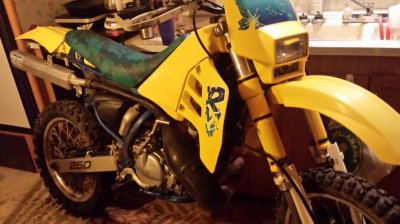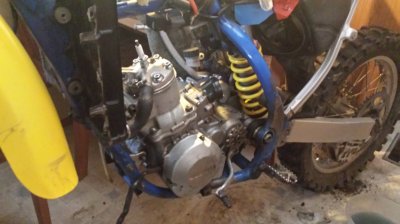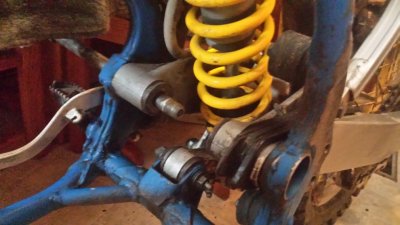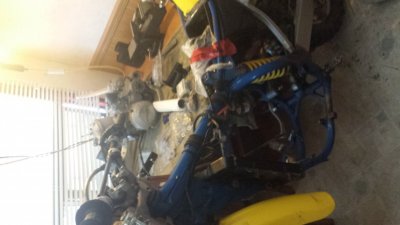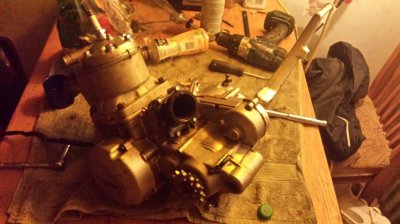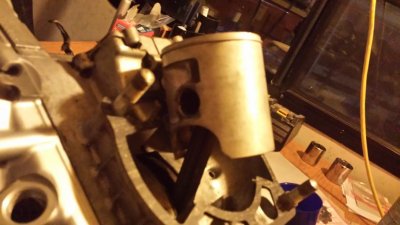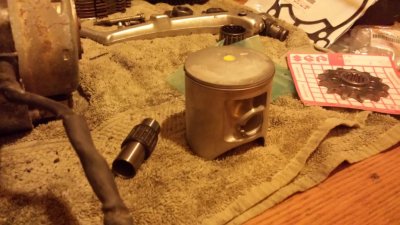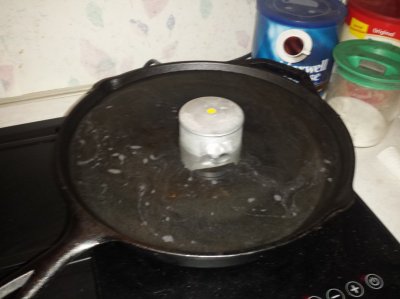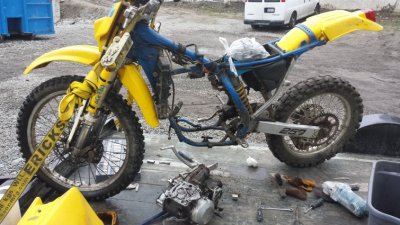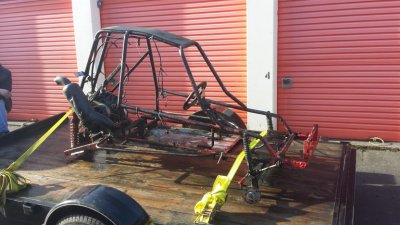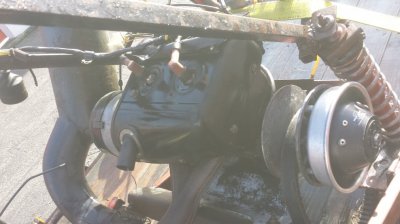89_3&3
Full Access Member
- Joined
- Feb 18, 2014
- Posts
- 226
- Reaction score
- 11
- Location
- vancouver
- First Name
- john
- Truck Year
- 89
- Truck Model
- 3500
- Engine Size
- 5.7
How do you plan to deliver the air from the compressor outlet to the intake manifold.
What ever type of ducting you decide on (and how you choose to will interface it with the carb throat) will have to be sealed tightly to prevent boost loss. This will in effect put this project in the all or nothing category.
By that I mean you won't be able to switch back and forth between a charged intake system and an NA system as power requirements vary. You will be stuck with a closed system that is dependent on the compressor for air supply and and an engine that will be driving that compressor throughout it's entire operational range.. And it goes without saying that the compressor that will constantly impart a significant reduction in shaft HP even during those periods when the engine can't use the increased oxygen supply. Imagine just cruising along in 3rd gear - with the throttle just open past it's crack point.
The mechanically coupled compressor will still be pumping out huge cfm's of charged air that have nowhere to go - except out the blow off valve. This is in contrast to a turbocharger, which is designed to idle down and float just above manifold pressure when the engine is under low loads/decreased exhaust flow rates. The cost in HP to roll a turbo over slowly while it waits to be called upon, is minimal
Brings me to another question; Where are you planning to mount the aftercooler? I have not seen mention of that component in any discussion of your plans/designs. Without an aftercooler, a large percentage of any HP gains you achieve will be negated due to higher combustion air temperatures at the intake manifold. Increased air temperatures will result in lower volumetric efficiency and it's resultant lower oxygen content.
Sorry to sound so pessimistic, because I really do wish you success, but I have my own little idea as regards getting a little bit of boost into the engine. It involves the use of my AIR pumps:
I just want to see if there is any increase in performance if I tee the discharges from two smog pumps together and then run that common pipe up to the air cleaner and terminate it inside the air filter (i.e. the downstream side of the media). They currently deliver cool air into the exhaust manifolds at each cylinder, but that can be easily re-outed.
Admittedly not a very well executed idea, considering the lack of an airtight delivery system (I imagine most of my charge air will end up just escaping by flowing backwards out through the filter media).
But like you say:
And as long as you can push more air into the motor than its own vacuum then you can run more fuel and increase hp
So, anyway, here is my dream of how thye system will work:
During periods of heavy loads/WOT when the engine is really sucking the air down and that space between the air filter and the carb throat is under the highest negative pressure it ever sees. I sense the engine is starved for oxygen and calmly reach down under the dash and flip a switch.
Immediately, power is applied to the Air Control Valves. These valves are integral with the air pumps. Each is a high flow electric air control valve and is equipped with an electric solenoid to combine electronic control with normal diverter valve function (which I have disabled).
When I switch power "On'', the solenoid of each is energized and the air control valve operates like a diverter valve. Due to the relatively high RPM of the engine, the belt driven air pumps are already pumping air out at their maximum design rate.
Where each valve was previously dumping the output from it's associated A.I.R. pump into the exhaust manifolds via a check valve, it now begins directing the total volume of air delivered by the A.I.R. pump to the common line. That volume of pressurized air is joined by the output from the other pump and that combined total of charge air is piped up to the negative pressure area between the air filter pleats and the downdraft of the carburetor.
This entire process, from when I reach down and flip the switch to the moment when that first blast of boost pressure slams into the vestibule and pushes the manifold pressure up over atmospheric takes only a split second.
At that point, I am hurled back into my seat due to the sudden incredible rate of acceleration, the scenery turns into a blur and - remarkably, even with my 4:11 gears, I feel my rear tires lose traction with the pavement. I am smokin' them up!
Oh man, I can hear the money rolling in already - I better get this idea patented - quick!
Bahaha to funny and your my kind of people


